Did ISIS kill Iraqis with weapons the US gave to Syrian fighters?
Romanian and Bulgarian munitions ISIS captured from the New Syrian Army in Bukamal were later found throughout Iraq
Weapons and ammunition the United States seemingly provided to Syrian fighters were captured by ISIS and turned against America’s own partners in Iraq, including at the bloodiest battles in Mosul and Fallujah.
This according to a report issued on Thursday by the group Conflict Armament Research found that a significant source of weapons recovered from Islamic State in Iraq and Syria were Eastern European countries who sold them to the United States. The Americans apparently retransferred these arms to Syrian armed opposition fighters despite non-re-export clauses in the purchasing agreements.
That the U.S. was arming the Syrian rebels through third parties is not unknown, but the CAR report shows the extent to which weapons purchased from EU states and captured from the armed opposition were used against Syrian and Iraqi forces.
The landmark report, called Weapons of the Islamic State, is the result of three years of research into weapons recovered from ISIS on the battlefield and traced to their countries of origin. In some cases, CAR was able to trace the path the weapons traveled from the European frontier where they were manufactured, then sold to the U.S., supplied to Syrian fighters, captured by ISIS and recovered by the U.S.-backed Iraqi and Syrian forces fighting them. The Iraqi Security Forces and Kurdistan Region Peshmerga in Iraq and People’s Protection Units (YPG) in Kurdish-controlled Syrian territory gave CAR investigators complete front-line access, the report said.
CAR noted that a broad cross-section of the materiel recovered displays evidence of attempts to conceal provenance, such as by repackaging ammunition or destroying factory marks on ammunition or weapons.
The bulk of the recently-manufactured weapons were produced in Eastern Europe, primarily in Bulgaria and Romania, as well as in other European countries, Iran and China. CAR stressed that the inclusion of manufacturers or other parties and countries of origin did not denote illegal activity on their part. There is no arms embargo on Syria or sanctions on weapons provided to the Iraqi government.
European weapons at the siege of Kobane
ISIS propaganda routinely played up their battlefield captures: weapons stolen from Iraqi security forces in the early days of the group’s tear through the country when the Iraqis turned and ran. Most of these arms were sold to the Iraqi government in the days after Saddam Hussein was ousted.
At the very least, CAR said, 12 percent of weapons recovered from ISIS came from Iraqi national stockpiles, much of which was captured in mid-2014 from the Iraqi armed forces around Mosul.
“These findings, and the widespread use by IS forces of a range of captured Iraqi army equipment during the siege of Kobane – including U.S.-supplied armoured vehicles – confirm the initial impact of battlefield capture in Iraq on the group’s war fighting capacity farther afield,” the report said.
Some of the weapons were immediately used in the siege of Kobane in northern Syria, including a PG-7M 40 mm rocket legally exported from Bulgaria to the Iraqi defense ministry in 2010, a MG-M1 7.62x 54R mm machine gun legally exported by Bulgaria to the Iraqi defense ministry in 2005 and ammunition supplied legally by Serbia to the multi-national force in Iraq in 2004.
The siege lasted more than four months until the YPG were able to capture Kobane in January 2015.
CAR researcher Damien Spleeters, who made dozens of trips to Syria and Iraq for this report, told The Defense Post that none of the weapons recovered in Kobane were diverted by the U.S., but supplied directly to the Iraqi government and captured on the battlefield.
“We believe that ISIS got a hold of it once they took Mosul or other major urban centers in Iraq in 2014 and then rapidly moved it to Kobane to support their offensive there,” he said.
In other cases, weapons seemingly procured by the U.S. for Syrian rebels ended up in the hands of ISIS and was used against Iraqi forces backed by the American-led Coalition.
“There is strong evidence that this material that had been purchased by the U.S. from suppliers in the EU has been supplied to rebel groups, some of which directly supported by the U.S., like the New Syrian Army in Eastern Syria, and then we have the same material with the same lot number recovered from ISIS in Iraq,” Spleeters said.
The exporting governments told CAR that the purchaser was the U.S. Army. U.S. internal policy is not to respond to trace requests for weapons, Spleeters said. The U.S. Department of Defense did not respond to a request for comment by The Defense Post.
Spleeters said none of CAR’s partners on the ground, the Iraqi forces and Syrian Kurds who facilitated their access to numerous battle sites, knew where the weapons came from.
Nicholas A. Heras, a Middle East Security Fellow at the Center for a New American Security, told The Defense Post that the Obama administration was under significant pressure to show success against ISIS.
“You would have seen a few more risks being taken because there was that pressure from the top, from the White House to show that the U.S. was serious about fighting ISIS.”

Syrian opposition weapons captured by ISIS in Bukamal
The CAR report shows how widely the weapons were transferred once they left U.S. hands. By tracking the lot numbers, the investigators were able to piece together three probable trafficking routes: one traveling west to east along the roads linking Kobane to Mosul through Al Hasakah in northern Syria and Tal Afar in northern Iraq, and a two north-south corridors that follow the path of the Tigris and Euphrates rivers from Mosul and Al Hasakah to Ramadi and Fallujah.
The lot number of the Romanian PG-9 73 mm rockets sold to the U.S. Army in 2014 is visible in a July 2016 ISIS video celebrating the capture of weapons from the Syrian opposition group Jaysh Suriyah al-Jadid (New Syrian Army) near Al Bukamal.
“The New Syrian Army was supposed to be able to guarantee that if they seized Abu Kamal they could hold it,” Heras said. The NSyA was intended to be an indigenous force, trained and equipped by the Americans, that could both seize and hold territory captured from ISIS, and an alternative to the Kurdish-dominated SDF.
The circumstances under which the NSyA apparently lost the weapons were dramatic.
The NSyA was formed in May 2015 by anti-government fighters from the wider Al Bukamal area in eastern Syria near the border with Iraq. The rebels were linked to the Authenticity and Development Front, which included some Islamist fighters. The group was reportedly recruited in Turkey, trained in Jordan and received support from the U.S., Jordan and the United Kingdom.
On March 5, 2016, the NSyA and the Forces of Martyr Ahmad al-Abdo captured al Tanf border crossing from ISIS, in an operation that the U.K.-based Syrian Observatory for Human Rights said was a cross-border raid from Jordan.
Just over a month later, a group of between 100 and 200 NSyA rebels launched an offensive from Tanf supported by the U.S.-led Coalition aimed at capturing the border town of Al Bukamal. The NSyA announced the operation on its Facebook page, saying it was launched in conjunction with Iraqi forces attacking Qaim, which lies just across the border. The Coalition said the operation was intended to cut ISIS supply and communication lines between Iraq and Syria.
Colonel Chris Garver, then the Coalition spokesperson, said the raid was intended to “liberate Bukamal and cut [the Islamic State’s] military supply lines in the Euphrates Valley between Syria and Iraq.”
According to some reports, the NSyA was airlifted to the area in Coalition helicopters. They were to be assisted in the operation by “sleeper cells” in the Bukamal area, although it was reported that the area was under ISIS curfew because news about the upcoming attack had leaked.
The Authenticity and Development Front called for support in Al Bukamal on its Bu Kamal Liberation Radio station but a member of the ADF said it was difficult for people to join them because ISIS “has an iron fist,” adding that “people are not listening to the radio so much because they consider it old-fashioned.”
The NSyA reportedly captured Hamdan Military Airfield and a nearby village and held positions in the desert between the Tanf border crossing and Al Bukamal. The following day ISIS counter-attacked after encircling the rebel positions. Coalition air support was withdrawn, with U.S. fighter jets reassigned to assist in the battle for Fallujah, in Iraq, where they destroyed a massive convoy of ISIS vehicles.
The lack of air support allowed ISIS to quickly push the rebels from the positions they held, driving back into the desert and capturing a significant quantity of arms and ammunition in the process. ISIS later published a video showing the munitions recovered. Bellingcat documented these weapons in a now-deleted post about the battle and the video archived on the Wayback Machine.
U.S. Secretary of Defense Ash Carter later described the removal of air support as a missed opportunity.
Screen captures from the ISIS video from the archived Bellingcat post apparently show boxes of unlinked 5.56×45, boxes of linked 7.62×51 NATO and boxes of linked .50 cal BMG ammunition; boxes of M67 grenades; boxes of 60mm and 120mm mortar rounds; PG-9 rounds; M252, M224 and M120 mortars; M2HB machine guns; M240B machine guns; an M1100 mortar trailer (seen in other post); Thuraya IP+ devices, radios, tablets and DJI drones.
Rao Komar, the researcher who wrote the Bellingcat piece, said the story was taken down because later evidence showed the casualty count was higher than originally suggested, saying “ISIS at some point released a video showing more New Syrian Army casualties.” Komar said he stood by the accuracy of the information in the article about weapons and ammunition losses.
At the time, NSyA spokesperson Mzahem al-Saloum said the operation as a success, insisting that the withdrawal was a tactical retreat at the end of a “deep penetration raid.” ISIS later published a video showing the munitions recovered. Bellingcat documented these weapons in a now-deleted post about the battle and the video archived on the Wayback Machine.
Saloum told The Defense Post the NSyA never used the PG-9s in Bukamal.
“We did not take them to the operation. Some of these rockets should have been in the second wave of the attack but the second wave did not happen,” he said, adding that ISIS’s claim of capturing the weapons was propaganda.
Saloum said the Americans left Bukamal after coordinating with NSyA commanders on the ground, telling them they needed to destroy the convoy before ISIS reached the border and destroyed “everyone.”
“There was a lot of assumptions that were made on the U.S.-led Coalition side about the New Syrian Army’s ability to seize and hold territory … but the New Syrian Army had limitations, and those limitations for all intents and purposes ended the U.S. project of using At Tanf as a base to try to launch another uprising against ISIS and another force other than the SDF,” Heras said.
Amid infighting in December 2016 the NSyA dissolved and some of its fighters regrouped, calling themselves Jaysh Maghawir al-Thawra (Revolutionary Commando Army), better known as MaT.
Whatever caused the offensive in Bukama to fail, PG-9 73 mm rockets with the same lot number (12-14-451) as those in the ISIS video, which they claimed to have captured from NSyA, were later recovered from ISIS in Fallujah, Tal Afar and Mosul.
Other Romanian-supplied PG-7PM 40 mm rockets were recovered from ISIS near Rutba in western Iraq in July, and Tal Afar in August. According to CAR, Romania delivered those rockets to the U.S. Army in December 2014 and November 2015. All of the orders included non-retransfer clauses, CAR said.
On Wednesday the Iraqi interior ministry announced that over 26,000 Iraqi soldiers were killed and 28,000 wounded during the four-year war with ISIS. There is no credible account of the number of Iraqi civilians killed during the war, but Kurdish intelligence estimated that over 40,000 civilians were killed during the nine-month battle for Mosul. The monitoring group Airwars says more than 5,900 Iraqi civilians were killed by U.S. airstrikes from August 2015 to October of this year.
The U.N. Mission to Iraq estimates that a minimum of 26,103 Iraqi civilians were killed between June 2014 and November 2017.

US arms supplies to Syrian rebels
On December 21, 2015, Bulgarian journalist Mariya Petkova reported that that the U.S., United Arab Emirates and Saudi Arabia had purchased millions of dollars of Bulgarian military equipment and ammunition that fueled the conflict in Syria and possibly Yemen.
Petkova found that Bulgaria had approved sales to Saudi Arabia of more than €85 million worth of arms and munitions in 2014 and €29 million ($34 million) in 2015. During 2015, she reported, the U.S. purchased Bulgarian weapons as part of its Syrian rebel train-and-equip program.
A U.S. contractor working for the Virginia-based company Purple Shovel died in June 2015 when a rocket-propelled grenade exploded at a testing facility in Bulgaria. The incident forced the U.S. embassy to issue a statement admitting that Purple Shovel – and thus the Pentagon – were aiding the Syrian armed opposition.
Petkova said it was likely that the Bulgarian government knew the weapons were intended for Syria.
“As far as Bulgaria is concerned, all necessary documents were submitted by the companies buying the weapons, including end user certificates issued by the U.S. and Saudi Arabia. In 2015 when the story first surfaced, the then Bulgarian economy minister (responsible for overseeing arms deals) dodged responsibility and said that the U.S. authorities should explain how Bulgarian weapons were ending up in Syria,” she told The Defense Post.
“It is unlikely that the government was unaware that those Bulgarian arms were supposed to go to Syria. The U.S. and Saudi armies do not use Soviet-style weapons.”
Criterion Seven of the EU Common Position requires E.U. states to factor in breaches of commitment into future licensing decisions.
Spleeters said that none of the supplier governments CAR contacted knew that their supplies were destined for third parties.
“They said that they thought the purchaser was the end-user as it was written on the end-user certificate, and they did not know that this materiel would be diverted because of the non-re-export clause in the agreement in which the U.S. is certifying that they will not divert this material without agreement,” he said. “In these cases they did not have that agreement.”
“I think it’s premature to know whether they would suspend their sales at this point,” but both Bulgaria and Romania are reviewing their export policies and conducting internal investigations, he added.
The governments of Bulgaria and Romania did not respond to a request by The Defense Post for comment by the time of publication.
Iraqi federal police recovered a Bulgarian-manufactured 9M111MB-1 ATGW missile tube from ISIS forces during the battle of Ramadi. CAR traced it to a Bulgarian sale to the U.S. Army through a supply company called Kiesler Police Supply. The export occurred on December 12, 2015, less than a month after the battle of recapture Ramadi from ISIS had begun; the weapon was recovered on February 9, 2016, the day it ended. Hundreds of Iraqi forces were killed in the battle and over 1,000 were wounded.
A photograph published by the armed Syrian opposition group Jaysh al-Nasr on December 21, 2016 showed its fighters operating a 9M111MB-1 ATGW30 with the same lot number as the missile tube recovered from ISIS in Ramadi. Its serial number (365) was close to the one (286) documented by CAR, suggesting both were part of the same supply chain.
Another 9M111MB-1 ATGW30 with a different lot number recovered during the Mosul operation in January 2017 was traced to a Bulgarian export company that exported it to the U.S. Army on an unspecified date.
“The two cases … show that the United States retransferred successive batches of ATGWs,” CAR said.
CAR also documented a number of PG-7T 40 mm rockets also sold to the U.S. by Bulgaria. One recovered by the YPG near Hasakah in May 2015 was exported to the U.S. Department of the Army through Kiesler Police Supply, and included a non-retransfer clause. It has the same lot number as another PG-7T 40 mm rocket recovered from ISIS in Ramadi, as do three others recovered by the Iraqis near Baghdad in June 2016.
Kiesler Police Supply is an Indiana-based company that the U.S. military has contracted with for foreign partner sales for years. In 2003-2004 the company won at least $25 million in contracts to supply firearms, ammunition and other equipment to the Iraqi police, according to the Geneva-based Small Arms Survey.
The company’s name often appears spelled ‘Keisler.’ In one June 2006 government contract list, it is included 32 times and shown as being awarded a range of contracts from grenades to three sets of AK-47 rifles to the tune of more than $5.25 million.
Kiesler did not respond to The Defense Post’s request for comment, and CAR said they had not responded to their inquiries.

Trump continues train-and-equip in Syria
By showing off the rockets captured at Bukamal, ISIS made a clear point that NSyA was “a mask, hiding an American face,” Heras said. Everyone knew U.S. weapons were going to the anti-Assad rebels, “but the Islamic State was making the very clear argument to its internal population, that ‘you might think the Americans give you weapons and pretend to make you a partner, that will save you, but there is no alternative to us.’”
The re-exporting apparently continued even after initial failures, and after the Pentagon was said to have ended its initial $500 million train-and-equip program in October 2015.
The Defense Department has requested $1.8 billion for the counter-ISIS train-and-equip fund for fiscal year 2018, including $1.3 billion for Iraq and $500 million for Syria. In July, U.S. President Donald Trump ended a separate, covert CIA program training program that Obama began in 2013 to bolster the Syrian opposition.
In September of this year, CAR documented a Romanian PG-9 73 mm rocket at the Al Jamhuri hospital compound in Mosul. The rocket had been modified for their own launcher system, but Romania told CAR that it was part of a shipment of more than 7,000 rockets delivered to the U.S. Department of the Army in March 2016, months after the Syrian rebel program was discontinued. The EUC contained a non-re-export clause.
Many of the older weapons traveled a much more complicated path, through Europe and Africa, spending years hidden somewhere in Libya before finally reaching Syria. CAR was able to trace two FN FAL 50.00 automatic rifles to a Belgian government sale to Pakistan that took place in 1980, although it took Spleeters, a former journalist, filing a freedom of information act request before he could get access to the archives. From Pakistan, the weapons made their way to Libya and then Syria.
CAR also traced “numerous items deployed by [ISIS] forces to initial exports from Bulgaria to Saudi Arabia” that were subject to non-retransfer clauses. RHEAT-9MA 73 mm rockets with the lot number ((10))-04-11, sourced to Bulgaria, were found by the Iraqis in the battle of Ramadi in 2016, operations in Fallujah in 2016 and 2017 and at the Al- Jamhuri Hospital in Mosul in July 2017. Some of the rockets were still packaged, CAR said.
The Iraqis found dismantled RHEAT-9MA 73 mm rockets with the same lot number at an ISIS workshop in Tal Afar in September, and a propelling charge near Fallujah in Juny 2016. Bulgaria confirmed that all were sold to Saudi Arabia and subject to a non-re-export agreement.
Ammunition has shown to be the most difficult to track, because much of it was found loose with no lot numbers that would allow investigators to trace it to an purchaser. CAR investigated 40,984 pieces of ammunition recovered from ISIS in Iraq and Syria that originated in 38 countries. Half of it was from China and Russia, with significant quantities coming from Romania, the U.S. and Bulgaria. Only about 2 percent of the ammunition was produced domestically in Iraq, and about 6 percent in Syria.
“In some cases we think there is a conscious choice to try to make it more difficult to trace it, and that includes trying to erase on all markings on certain rockets, like repaint them, for example. We think that somebody at some point in the supply chain knows that this is a diversion for a terrorist group and wants to erase markings so that we will not document the chain of custody and try to find out who actually diverted the weapons to ISIS,” Spleeters said.
Heras said ISIS would see no benefit to obfuscating the source of its ammunition.
“For ISIS’s propaganda purposes, the more it can connect its Syrian opponents like the New Syrian Army to a U.S./Western/Christian crusader conspiracy against it, the better,” he said. “ISIS is a very sophisticated organization: It knows the power now of the analysis of the crowd. It knows that if it releases these images with these serial numbers, researchers will try to figure out the entire chain of supply.”
Although the CAR researchers have not yet been able to trace the origin of much of the ammunition recovered from ISIS, they are working to reconstruct markings that were obliterated somewhere during the supply route.
“Sometimes you can still make it out. And in some parts of the rockets that they have forgotten about, so there are still some markings that we can document. So we are working with the exporting countries to try to know who was the end-user,” Spleeters said.
Editor’s Note: This article was updated on December 15, 2017 to fix a typo. An earlier version incorrectly stated that ammunition Serbia legally supplied ammunition to the multi-national force in Iraq in 2000.




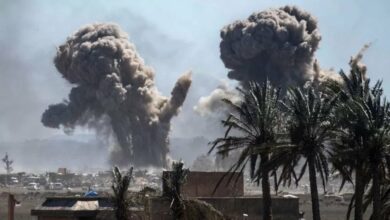

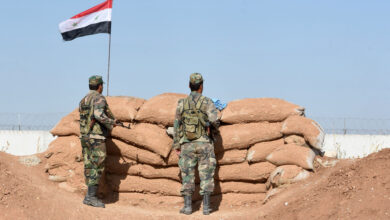
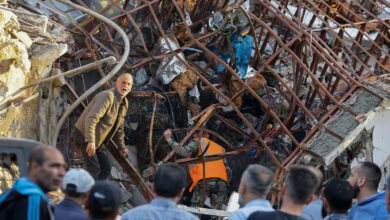

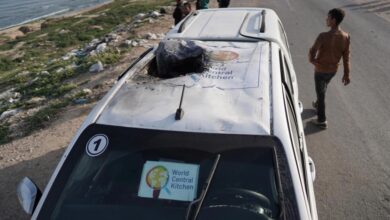
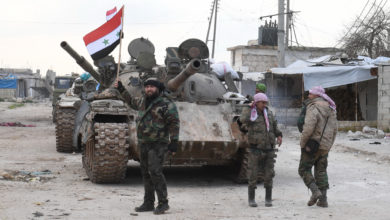
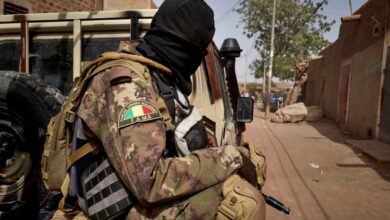
2 Comments